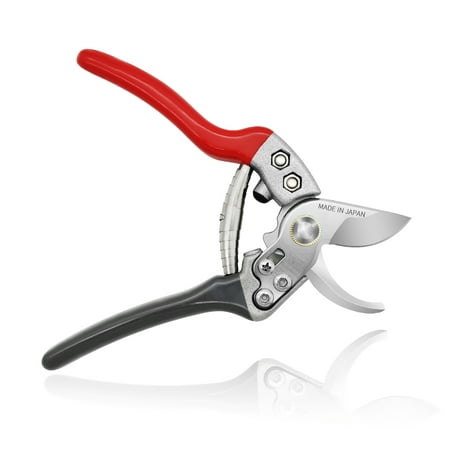Is it too late to prune forsythia? Advice from a professional gardener on caring for these flowering shrubs
Forsythia flowering will be greatly reduced next year if stems are cut too late in the season


Forsythia shrubs are hardy and resilient, illuminating borders with golden yellow blooms early in the year. When the winter cold feels never-ending, forsythia shrubs signify that spring is just around the corner.
Pruning these plants is a time-critical task. As with many woody shrubs, like weigela and mock orange, forsythia plants flower on last year's growth. For this reason, knowing how to prune forsythia and the correct time to do so is important.
Trimming your forsythia shrubs at the right time will result in good growth and brilliant blooming, but if you prune too late in the spring or summer, this will significantly reduce flowering. As a gardener, I have pruned these shrubs over several years in different gardens across the UK, and I have learned that considered and timely pruning is essential. Here, I share all I know about the right time to reach for the pruning shears.

When is it too late to prune forsythia?
When learning to grow and care for any shrub, the goal is to maximize flowering and nurture healthy and thriving plants. While the exact pruning time will vary depending on your location, local climate and US hardiness zone, learning how to identify the right time to reach for the secateurs or shears is crucial.
When is the best time to prune forsythia?

The ideal moment to prune forsythia shrubs is immediately after flowering. Once the yellow flowers fade and fall, that is the time to prune.
Pruning times will differ from place to place depending on flowering. In milder zones, such as US hardiness zone 6, this could be anytime from April, whereas in cooler zones, such as US hardiness zone 4, forsythia shrubs typically finish flowering in May, so pruning may occur in late May and June.
While it is impossible to put an exact time on this task, the best approach is to observe your shrub and notice when yellow petals begin to drop. Once all the blooms have fallen, and new leaves are shooting, sharpen those shears and get snipping.
Design expertise in your inbox – from inspiring decorating ideas and beautiful celebrity homes to practical gardening advice and shopping round-ups.
This may feel counterintuitive, as we all want to see new leaves and fresh growth on our plants, but pruning at this time will ensure that your plant remains compact and bushy, and flowers on the healthy new stems that emerge through the summer months.
It is always recommended that you use clean, sharp tools, to avoid jagged or rough cuts, so using something like these Felco pruning snips, available from Walmart, is a good idea.
What if I forget to prune forsythia at the correct time?

Pruning your forsythia too late in the spring or summer risks removing next year's flowering stems, meaning reduced flowers. While late pruning will not significantly damage your forsythia, know that blooming will be less prolific than it might otherwise be with timely trimming.
If your shrub is in good shape, and not too woody or leggy, I would suggest leaving the light pruning until next year. While you can remove any dead or damaged stems, it is best to leave healthy flowering stems if you have missed the pruning window.
Hard pruning is not recommended during spring or summer, and if you need to carry out any significant pruning, it is best to wait until the fall. This might be the case for an inherited old plant in the yard - for example, if you have just moved into a new property. Hard pruning will mean no blooms during the following spring but will help to rejuvenate your shrub.
This type of severe pruning is best done in the fall when the plant is dormant, causing as little damage to the shrub as possible. While forsythia plants are considered low-maintenance shrubs, pruning when the plant is in active growth will see the plant bleeding sap, which will weaken the shrub and attract pests and diseases.
Shop pruning accessories
FAQs
Can I cut forsythia shrubs down to the base, to encourage bushy, compact growth?
If your forsythia is woody, with flowers found at the end of long, leggy stems, it is best to hard prune your shrub. This is best done in the fall when the plant is in a dormant state. I would recommend pruning only one-third of the shrub in one year, taking a gradual approach that will not shock the plant. While this will mean fewer flowers for the following spring, cutting down to growth points towards the base of the plant will help to revive your plant in the long term.
Pruning forsythia shrubs in the right way and at the right time is important to ensure that your plants remain healthy and full of blooms. For more information on caring for your trees and shrubs, see our guide on how to prune a magnolia tree, for another gardening task to add to your to-do list.

Thomas is a Content Editor within the Gardens Team at Homes and Gardens. He has worked as a professional gardener for both public spaces and private estates, specializing in productive gardening, growing food and flowers. Trained in Horticulture at the Garden Museum, he has written on gardening and garden history for various publications, including The English Garden, Gardens Illustrated, Hortus, The London Gardener and Bloom. He has co-authored a Lonely Planet travel book, The Tree Atlas, due out in 2024.


